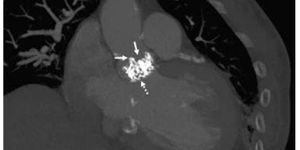A disease that causes blindness in both rats and humans could be prevented or reversed with a new genetic editing technology known as CRISPR/Cas9.
Inherited retinitis pigmentosa, a group of eye diseases causing “progressive vision loss” as cells of the retina gradually deteriorate, affects about 1 in 4,000 people in the United States (
NIH). In a recent study of rat models of the disease, scientists from Cedars-Sinai Medical Center capitalized on CRISPR/Cas9 abilities to disable the genetic mutation responsible for blindness in this disease. Their study was recently published in the journal
Molecular Therapy.
"This is the first time CRISPR/Cas9 gene editing has been used to prevent vision loss in a living animal,” said Clive Svendsen, PhD, a co-author of the study.
CRISPR/Cas9 was implemented based on a protective action of bacteria in the face of invading viruses. Bacteria replicate viral genes upon invasion and copy them into an RNA sequence. Then, the RNA binds to a protein called Cas9 and guides it to the gene in the virus so Cas9 can disable the gene.
The research team for this study repurposed the CRISPR/Cas9 technology to target the rhodopsin gene, which carries the dominant S334ter mutation that causes photoreceptor loss in the retina. After disabling the mutated gene in the rat models of disease, the researchers compared their new visual abilities to control rats without the disease by testing their optomoter reflex, an evaluation of visual acuity (
Vision Research).
The study concluded that with a CRISPR/Cas9 treatment to disable the trouble-causing mutation, the rats were able to see better.
Although rare overall, inherited retinitis pigmentosa is a very common cause of blindness in the United States, and there is no current cure. With potential applications for human cases of inherited retinitis pigmentosa, this new finding creates a promising future for the treatment of this disease.
Watch the following video to see what it looks like to have vision impaired by inherited retinitis pigmentosa.
Source:
Cedars-Sinai Medical Center









